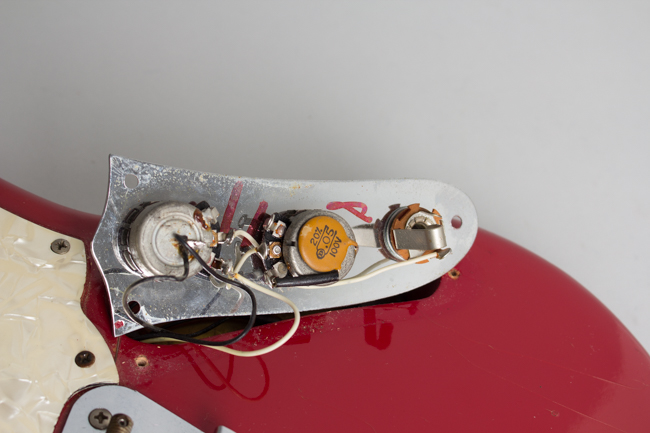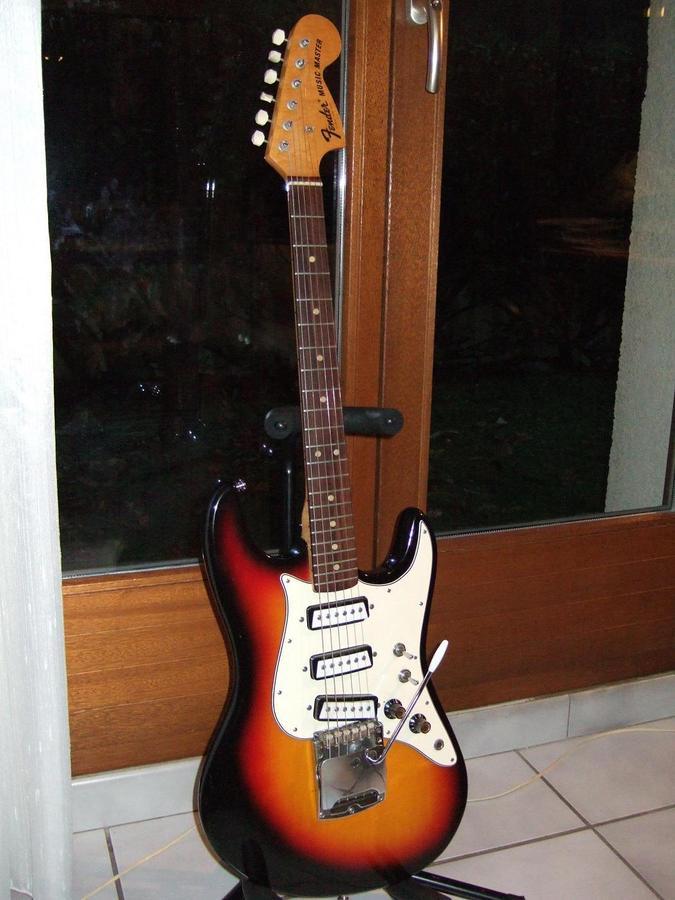

- #1964 fender musicmaster serial numbers
- #1964 fender musicmaster serial number
- #1964 fender musicmaster professional
- #1964 fender musicmaster series
Fender Musicmaster on stage for the first time Two years after the launch of the Stratocaster, Fender introduced two student models within a short period of time.
#1964 fender musicmaster professional
The idea was that kids and students would play smaller guitars which they would later trade in for adult professional models. They believed that if someone started playing their guitars at a young age, there was a good chance they would stay with the brand. And that's where the business talent of the people at Fender came in. You can see photographs of young children with big instruments from this era. Leo Fender and others in management were able to pinpoint the needs of guitarists and other musicians and tried to adjust their range of products to meet those requirements.Īfter the first few years, more and more children and students were trying to play electric guitars. There was also a very good business spirit at Fender. It was a time when groundbreaking guitar models were created and spread throughout the guitar world.
#1964 fender musicmaster serial numbers
This numbering system was used for a few months, then it was replaced with serial numbers with “US” as a prefix and an 8-digit number with the first 2 digits denoting the year (US).The 1950s were a golden era for Fender. The “10” prefix denotes instruments made in 2010. (Fender Peghead Decal "Z6" Example: 2006 Fender American VG Stratocaster)Ī new serial numbering system was used starting towards the end of 2009 with a “10” prefix with a space and 7 digits.
#1964 fender musicmaster series
“DZ” denotes American Deluxe Series instruments. “Z” Serial Numbers denote the instruments made in the USA starting in 2000. There are overlap with numbers and years. CBS sold Fender in March 1985 and serial numbers of instruments stayed the same. “N” and “E” Serial Numbers can also denote Japanese-made instruments. "S" Serial Numbers = 1970's, "E" Serial Numbers were started in 1979 to denote the 1980's, "V" Serial Numbers were introduced in 1982 for U.S. In mid-1976, Fender began putting serial numbers on the peghead for U.S.
#1964 fender musicmaster serial number
(Fender F-Series Serial Number Example: 1974 Fender Stratocaster w/ 3-bolt neck design) Fender Peghead Decal Serial Numbers: (Fender F-Series Serial Number Example: 1973 Fender Precision Bass) (Fender F-Series Serial Number Example: 1967 Fender Coronado II Bass) Serial numbers of instruments did not change immediately as they continued using existing production tools and parts. (Fender L-Series 1963 Serial Number Example: 1963 Fender Jazzmaster )įender was sold to CBS in January of 1965. (1958 Fender Serial Number Example: 1958 Fender Musicmaster) Fender L-Series Serial Numbers: It was originally called the Broadcaster and it was the first solid body mass produced electric guitar.įender P Bass Serial Numbers from 1951-1955:įender also introduced the Precision Bass (P Bass) in 1951.

Remember these serial number plates were just taken from the pile and Fender Telecaster (Early Esquire and Broadcaster) Serial Numbers from 1950-1954: Manufacturing Date Identification of Fender:įender serial number schemes from 1950-1964 contain overlap in numbers and years. (Fender Body Date 4/59: 1959 Fender Jazzmaster) (8th week of '74 Pot Codes on a 1974 Fender Stratocaster) (Fender Neck Date Example: 1971 Telecaster Bass) (Stamped 1963 Fender Neck Date: Fender Jazzmaster September '63) (Handwritten 1962 Fender Neck Date: Fender Jazzmaster March '62) (Handwritten Fender Neck Date Example on a 1956 Fender Precision Bass) Please refer to an experienced guitar tech or luthier if you are not sure about doing so. Fender neck plates were selected from large bins and it's difficult to properly date Fender's by neck plate alone. Also, another good way to properly date Fender guitars is to check the components (pots, pickups, body dates). Checking the date range can be done by removing the neck of the guitar and checking the butt end of the neck heel for a stamped or written date (See picture for an example).


 0 kommentar(er)
0 kommentar(er)
